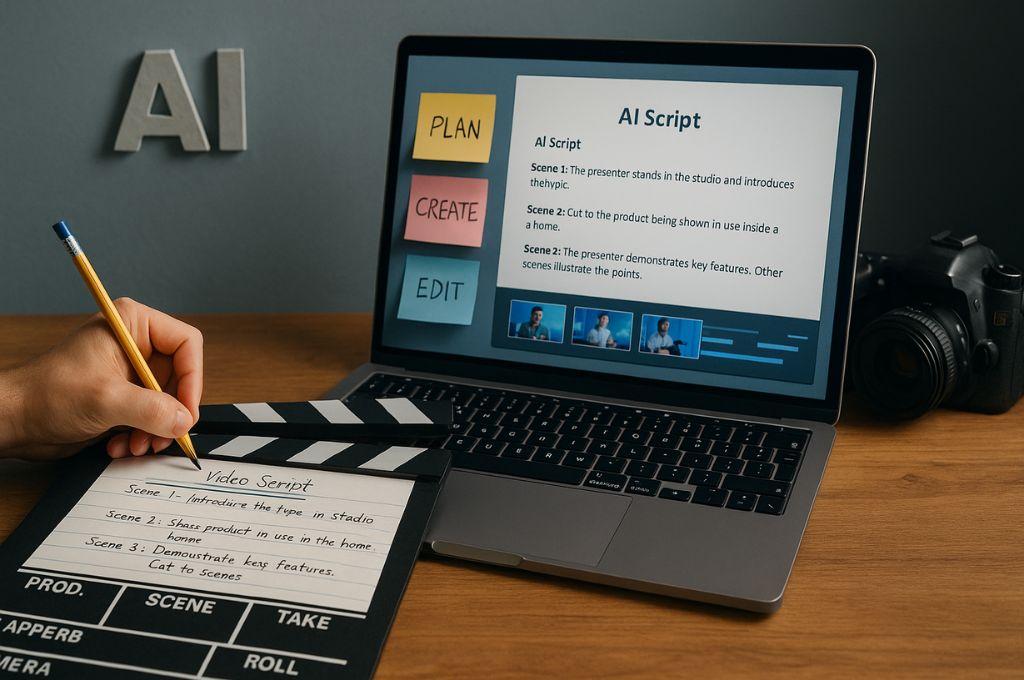Creating a full video used to mean writing a script, recording it, editing clips, finding music, adding captions, and exporting. Each step took time, tools, and energy. Most people gave up halfway.
Now, things are different.
If you have a clear idea and a bit of structure, you can go from script to final video in under an hour. The process feels light, flexible, and repeatable.
Let me show you exactly how I do it.
Step 1: Write the message like you’re talking to one person
Forget the idea of writing a perfect script. Start with a short message, like you’re talking to a friend or client. One idea. One point.
Keep it around 100 to 150 words. That’s one minute of voiceover.
Break it down into small chunks. Each part should fit one screen.
Here’s a quick example:
“Most people lose half their editing time on useless steps. Today, I’ll show you how to skip all of that using one tool that rewrites your process.”
Simple. Direct. Conversational.
Once your script is ready, it’s time to bring it to life.
Step 2: Choose the right platform for your goal
The tool depends on the type of video you want to create.
-
For talking-heads or avatars, go with Synthesia or HeyGen
-
For text-to-video with stock visuals, try Pictory or InVideo
-
For image-driven or design-heavy output, use Runway or Designs.ai
Each tool will let you paste the script, choose the layout, and preview the output. If you’ve never used these before, the best AI video generator tools guide breaks them down by use case.
Choose a tool. Paste your script. Pick a voice and tone. Then click generate.
In most cases, you’ll have a full video in a few minutes.
Step 3: Polish it (but don’t overthink it)
Now that your video is generated, watch it once and make small changes. Maybe a word feels off. Maybe one scene moves too fast.
These platforms usually let you adjust timing, visuals, and voice. You can re‑generate specific scenes without starting over.
If you want to add subtitles, most tools do it automatically. If not, I upload the video into Descript to clean up and export with captions.
Keep it simple. Your goal is clarity, not cinema.
Step 4: Export and repurpose
Once the video feels right, export it. Then duplicate the same structure in different formats.
-
Cut into shorts
-
Change the orientation to vertical
-
Translate into a second language
-
Reuse the audio as a podcast intro
A single video script can become five different content pieces if you plan for it.
If you’re already using other platforms like Pictory or InVideo, you’ll see how this scripting flow fits directly into the AI video workflow boost.
Common mistakes to avoid
I’ve tested this process dozens of times. Here’s what usually goes wrong at first.
-
Trying to sound perfect. Speak like a human, not a textbook.
-
Writing scripts that are too long. People stop watching after 60 seconds.
-
Ignoring pacing. Add breaks. Don’t rush every sentence.
-
Using voice styles that don’t match the tone. Test a few.
-
Forgetting branding. Add your logo or color scheme if possible.
The key is to test, watch the results, and iterate. The more you use these tools, the more they adapt to your voice and rhythm.
Final thoughts
Making videos used to feel like a heavy task. Now, it’s more like assembling a story in a few clicks. When your script is clear, and your platform fits, the rest moves fast.
This guide gives you the structure. You bring the message.
If you want to see what happens after editing, the AI video editing tools that save hours every week will show you how to trim, polish, and publish your content faster than ever

